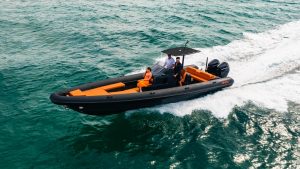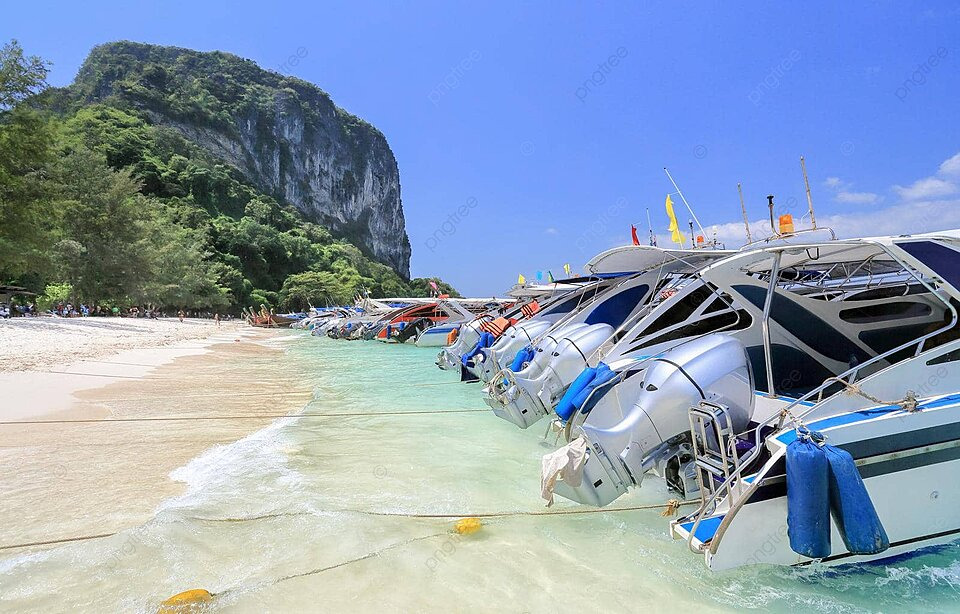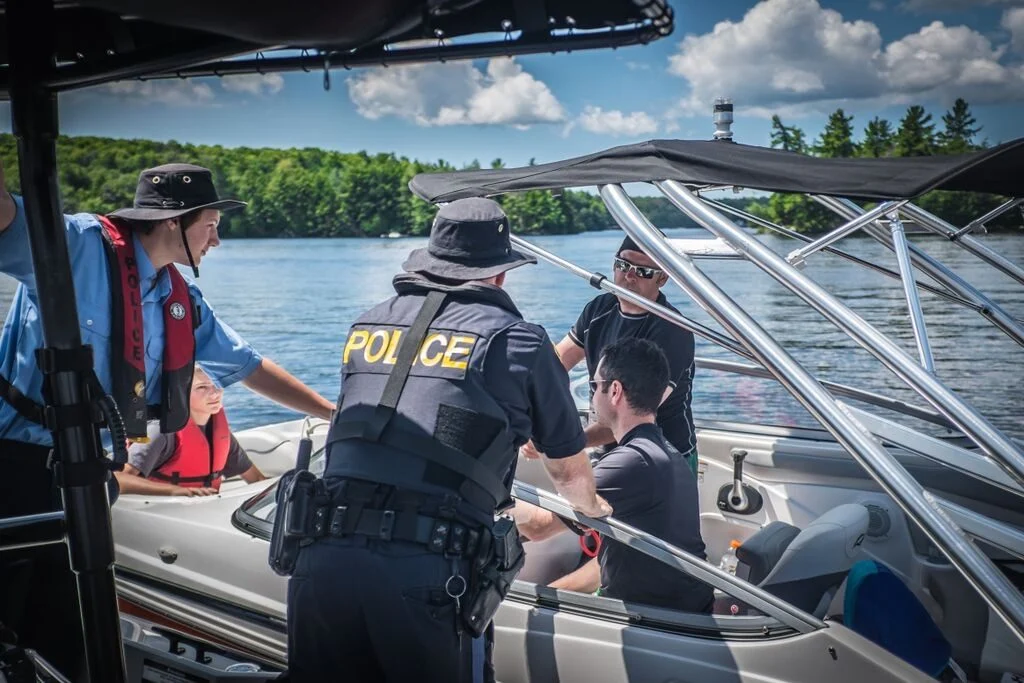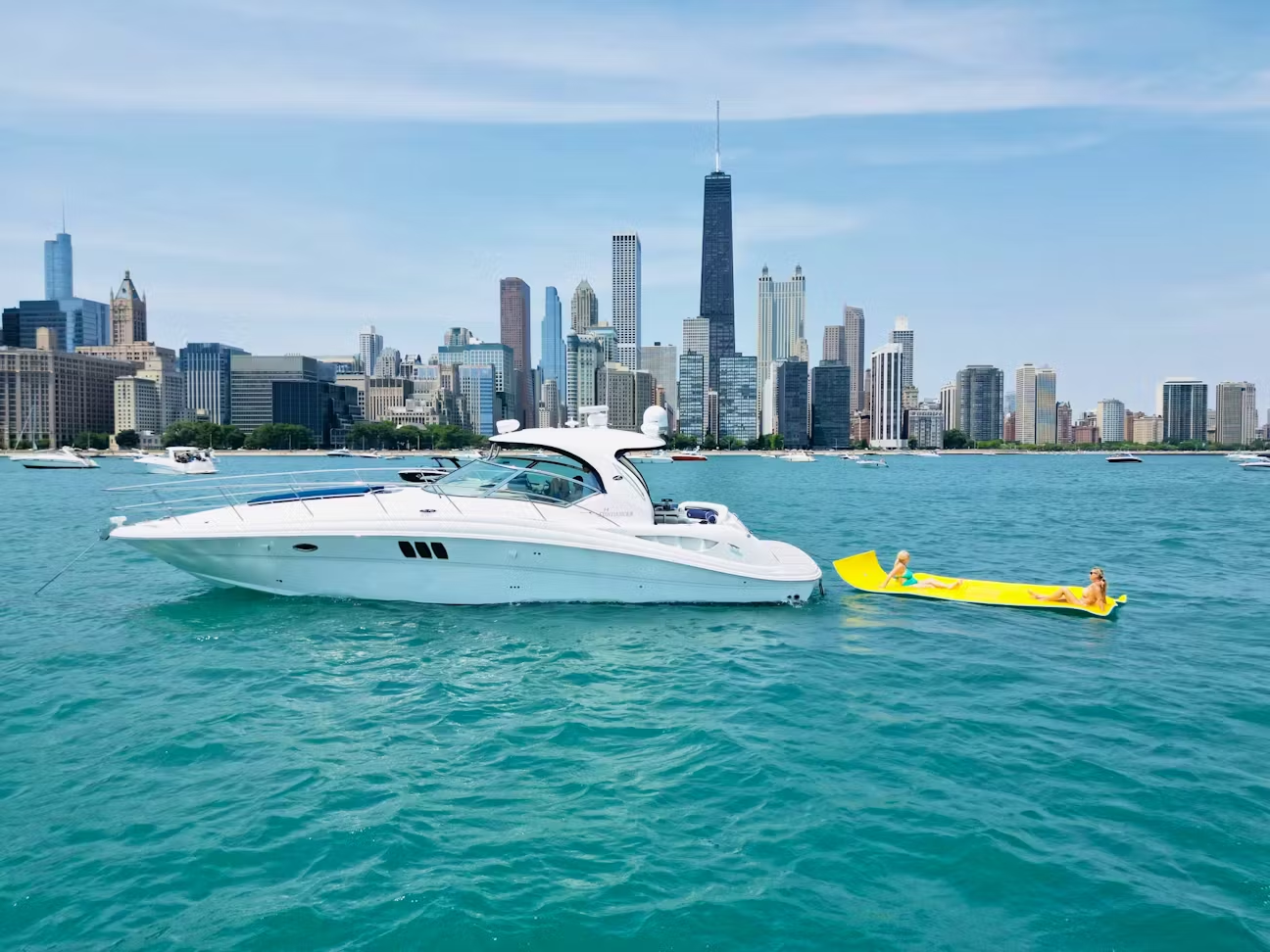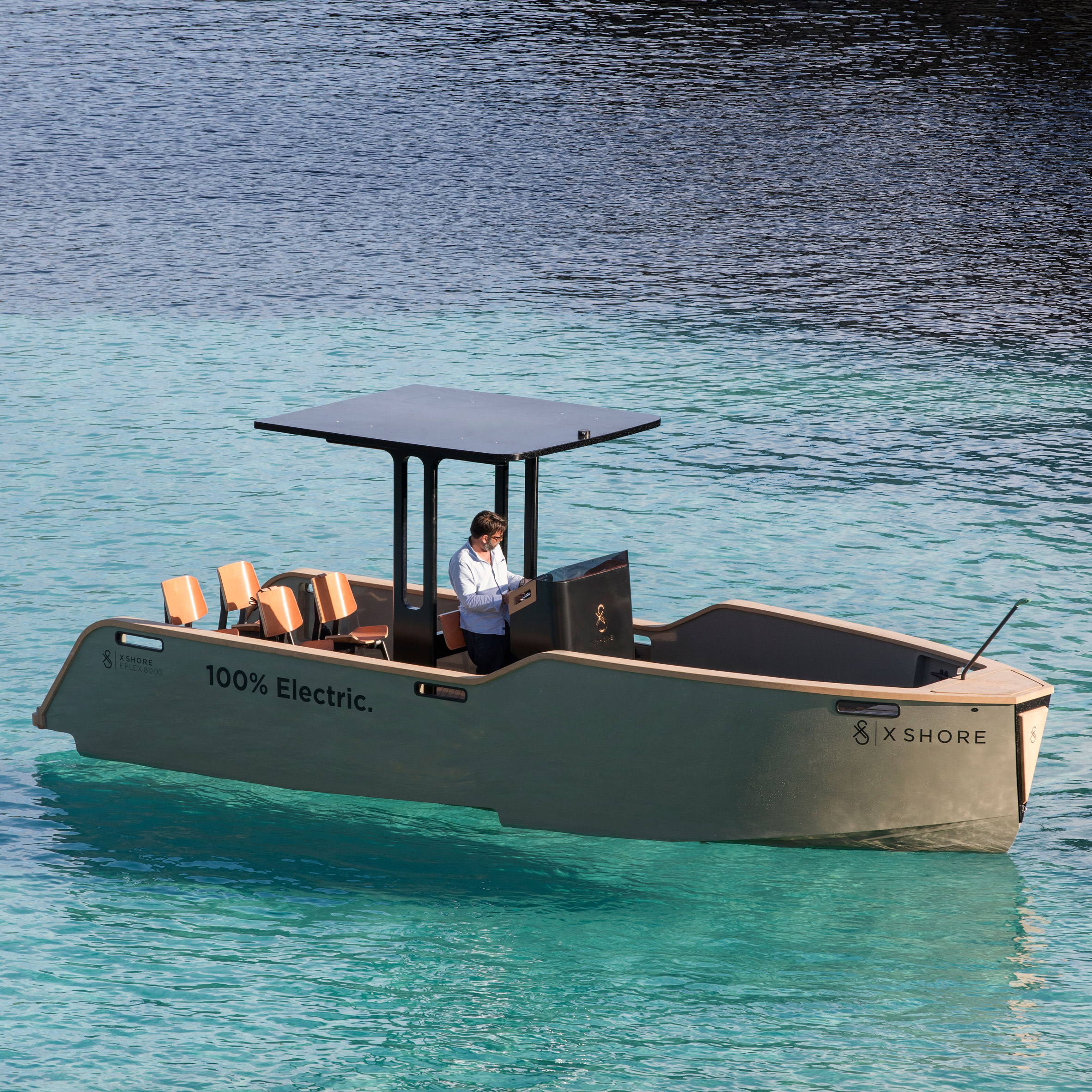
Cape George Boats
Cape George sailboats are renowned for their sturdy construction, classic design, and ocean-crossing capabilities. Originating from the skilled craftsmanship at Cape George Marine Works in Port Townsend, these vessels are built with an eye for detail and a reputation for reliability. With a range of models, each Cape George sailboat embodies the traditional aesthetics of a cutter while incorporating modern materials and amenities. The fusion of classic lines and contemporary building techniques results in boats that are both beautiful and functional, appealing to a niche market of sailing enthusiasts who value quality and craftsmanship over mass production.
The lineup of Cape George Cutters includes a variety of sizes, each one designed to offer a unique sailing experience. From the compact Cape George 31 to the more spacious Cape George 45, these boats are praised for their specifications that emphasize safety and comfort for long-distance cruising. Affordability varies across the different models and configurations, but the common thread is the value placed on durability and classic style. These boats compete in a specialized segment of the market, often being compared to other bluewater cruisers that favor a hefty displacement and a cutter rig for lengthy passages at sea.
Key Takeaways
- Cape George sailboats are praised for their combination of classic design and modern innovation.
- The range of models is tailored to offer varying sizes and specs to suit ocean-crossing endeavors.
- These vessels cater to discerning sailors, standing out in a niche market of high-quality bluewater cruisers.
History and Designers
The Cape George sailboats are renowned for their robust construction and timeless design, notably influenced by renowned figures such as William Atkin and Ed Monk. These vessels, hailing from the esteemed boat builders of Puget Sound, hold a special place in maritime history.
Origins of Cape George
Cape George sailboats trace their origins to the rich boating heritage of Puget Sound. Founded by Cecil Lange in 1974, Cape George Marine Works established itself as a distinguished boat builder known for crafting sturdy, sea-worthy vessels. The Cape George Cutter, a primary model in their lineup, exemplifies the blend of traditional design with the demands of modern sailing.
Influential Designers
Two pivotal figures stand out in the Cape George history: William Atkin and Ed Monk. Atkin, a legendary designer known for his efficient hulls, influenced the early designs of Cape George sailboats. His collaboration with Cecil Lange yielded a series of designs that led to the ever-popular Cape George 36. It drew inspiration from Atkin's Tally Ho Major, leveraging its proven design principles. Working alongside was Ed Monk, a skilled designer who contributed to refining and updating the Cape George vessels for contemporary needs.
Historic Models
The legacy of Cape George is best understood through its historic models:
- Cape George 36: An adaptation of Atkin's Tally Ho Major from the 1970s, this model remains a favorite and is recognized for its comfortable, fast, and well-behaved performance on water.
- Cape George 31: Similar to its larger sibling, this sailboat mirrors the philosophy of sturdy construction, with design elements reminiscent of Atkin's work and Lyle Hess's influence seen in the likes of the Bristol Channel Cutter and Falmouth Cutter.
Historic models such as these have solidified Cape George sailboats' reputation in the boating community, revered for their classic lines and bluewater capabilities.
Models and Specifications
Cape George sailboats are renowned for their classic design and seaworthy construction. This section outlines the various models available, details on their construction, and their performance specifications.
Common Models
Cape George sailboats include a variety of models, with the Cape George 36 being one of the most popular. Other sizes in the line range from the Cape George 31 to the Cape George 38. Each model reflects a blend of traditional aesthetics with modern building techniques, and they are revered by sailing enthusiasts for their craftsmanship.
Construction Details
Cape George Cutters are built with a robust fiberglass hull and a full keel design, ensuring stability and longevity. Decks are often finished in teak on plywood for a classic look and durability. The marriage of a heavy-displacement hull with a substantial ballast provides a stable and comfortable sailing experience.
Performance and Dimensions
The performance of Cape George sailboats is encapsulated in the design specifics:
- LOA (Length Over All)
- LWL (Waterline Length)
- Beam
- Draft
- Displacement
- Ballast
- Sail Area
The Cape George 36, designed by Cecil Lange with input from Ed Monk, boasts a LWL of 27.50 ft and a beam of 10.67 ft, lending to its comfortable handling characteristics. The sailboat's disp-to-length ratio and sail area/displacement ratio are carefully balanced to enhance performance. A well-distributed sail area complements the boat’s ability to hold course and speed effectively.
The specifications, such as the ballast/displacement of 40 or more, suggest that these vessels are not only stable but also capable performers under various conditions. These attributes exhibit why Cape George sailboats remain competitive against similarly sized bluewater sailboats.
Building and Customization
Cape George Cutter sailboats are renowned for their customizable features and robust construction, providing a unique blend of traditional craftsmanship and individual owner preferences. These vessels cater to sailors seeking a personalized sailing experience with a focus on reliability and seaworthiness.
Custom Fittings
Cape George Cutters are highly regarded for their custom fittings as each boat is designed to meet the specific desires of its owner. From the galley to the cockpit, individual preferences dictate the layout and equipment used. The berths, heads, and storage spaces are all crafted to optimize comfort and functionality, ensuring a pleasant voyage. Custom fittings also extend to the selection of woods and metals used, allowing for a distinctive look and feel.
Deck and Hull Options
When it comes to the deck and hull, potential owners have a variety of options at their disposal. They can choose from different materials, such as traditional teak or modern composites, which can influence the comfort ratio and the vessel's ability to withstand harsh marine environments. Deck beams and bulwarks are crucial aspects that can be adapted for added strength or specific aesthetic preferences. Furthermore, options for plywood decks are available for those who prioritize weight savings and ease of repairs.
Refits and Repairs
For those seeking to restore or enhance an existing Cape George Cutter, refits and repairs are services provided by Cape George Marine Works. Attention to detail is critical, especially when dealing with rot in wooden components or converting outdated systems. The construction process for any refits includes meticulous craftsmanship to ensure longevity and maintain the integrity of the vessel's design, be it for home-built or factory-completed boats.
Performance and Handling
Cape George sailboats are celebrated for their craftsmanship and seaworthiness. These vessels are designed to offer a blend of respectable performance and robust handling, particularly in challenging sea conditions.
Sailing Characteristics
Cape George sailboats, particularly models like the Cape George 31, are known for their heavy displacement which contributes to their ability to handle a wide variety of sea states. With a design favorable for bluewater cruising, these yachts possess a sail area to displacement ratio that suggests they are more than capable of making headway even in light winds. The hull type is typically a displacement hull, designed to push through the water with power and grace, allowing for a comfortable motion at sea.
Safety and Stability
An essential aspect of Cape George sailboats is their safety and stability. Thanks to the heavy displacement design, these vessels exhibit high levels of stability in rough conditions. The capsize screening formula, which can indicate a boat's likelihood to capsize in adverse conditions, generally favors boats like the Cape George, due to their heavy construction and deep keels. This stalwart construction not only mitigates capsize risks but also enhances righting capability post-capsizing, providing an added margin of safety during extended voyages.
Rigging and Sail Plan
Cape George sailboats are typically rigged for serious sailing, with robust rigging systems in place. The sail area on these vessels is generous, allowing them to harness adequate power from the wind. The sail inventory is versatile, designed to provide options for different sailing conditions and preferences. One can expect these yachts to come with a range of sails, such as mainsails, headsails, and often storm sails, making them adaptable to various wind conditions and sailing programs. The rigging provides a balance between performance and ease of handling, allowing sailors to manage the sail plan effectively, even when shorthanded.
Market and Pricing
The market for Cape George sailboats is nuanced, with pricing intricately tied to factors such as model, condition, and year. Notably, Cape George Cutters, particularly the venerable Cape George 36, possess a reputation for quality and seaworthiness.
Pricing Overview
Cape George boats, first constructed in 1974, command a premium due to their handcrafted nature and robust build quality. The pricing spectrum for pre-owned models varies significantly based on the year of manufacture and the condition of the vessel. As of 2024, buyers may encounter a Cape George 36 listed for around $160,000, though prices can fluctuate based on individual specifications and any refurbishments.
Prices for a well-maintained, factory-finished Cape George Cutter can hover above those of comparable home-built versions given the professional level of craftsmanship and detail. It is imperative for potential buyers to conduct thorough inspections, as the condition of these esteemed vessels directly influences their market value.
Popular Pre-Owned Models
The Cape George 36 remains an eternally popular model on the pre-owned market, famed for its stout construction and classic design by William Atkin and Edwin Monk Sr. Its hull longevity and timeless style contribute to sustained demand. Enthusiasts and connoisseurs often seek out this model for its bluewater capabilities and traditional aesthetic.
Another sought-after model is the Cape George Cutter 31', which holds its value well when in good condition. Buyers are attracted to its smaller size and the balance of performance and comfort it provides. For each pre-owned Cape George sailboat, condition reigns supreme as a valuation factor, and listings are as diverse as the boats themselves.
Competition and Alternatives
Cape George sailboats are renowned for sturdy construction and classic design. This niche appeals to a segment of sailors who prioritize long-lasting, ocean-going craft. In analyzing their market standing and the alternatives available, it’s essential to consider several factors that influence a sailor’s choice.
Comparable Brands
- Bristol Channel Cutter: This brand is reputed for the designs by Lyle Hess, much like Cape George's affinity for traditional lines.
- Falmouth Cutter: Smaller but robust, Falmouth Cutters offer a similar classic aesthetic and are also derived from a Lyle Hess design.
- Tally Ho Major: Known for its substantial displacement and seaworthiness, the Tally Ho Major mirrors Cape George’s bluewater cruising capabilities.
Market Positioning
Cape George holds a niche position in the market by focusing on classic cruiser models that emphasize durability and bluewater performance. They are particularly popular among sailors looking for a boat that feels both timeless and reliable, often considered heirlooms rather than mere vessels.
Performance Comparison
- Displacement and hull speed: Comparable models such as the Bristol Channel Cutter and Falmouth Cutter offer similar displacement-to-length ratios, which allow for a steady, comfortable sail akin to Cape George models.
- Sail area to displacement ratio: While Cape George sailboats are generally not the fastest, they maintain a favorable sail area to displacement ratio, balancing sail power and stability proficiently for their class.
Price Comparison
Cape George sailboats, like the Cape George 36, command a premium due to their craftsmanship and reputation. However, their prices often align with those of the Bristol Channel Cutter when similar specs and conditions are considered. Typically, Cape George models are more expensive than the more compact Falmouth Cutter. Market listings for used Cape George boats show prices that reflect their classic build quality and longevity.
Ownership Experience
When it comes to owning a Cape George sailboat, owners can anticipate a unique blend of tradition and community. Specifically designed for bluewater cruising with comfort in mind, these boats offer a robust living experience, demand regular maintenance, and come with a supportive community network.
Living Aboard
The Cape George Cutter's interior typically features a practical galley, cozy berths, and a fully equipped head, ensuring a comfortable living space for extended periods at sea. They have a comfort ratio which is indicative of their stability and sea-kindliness, making them a favorable choice for those living aboard. The larger models, like the Cape George Cutter 36', provide ample space with additional pilot berths, making the most of their interior volume.
Maintenance and Care
Built mostly in Port Townsend on the Puget Sound, Cape George sailboats incorporate a mix of fiberglass hulls and rich teak woodwork. While the fiberglass provides durability against the elements, the wood, especially on the deck, requires regular treatment to prevent rot. Owners need to adhere to a strict maintenance schedule, which may include resealing teak decks or ensuring the integrity of the boat's sail area against wear.
Community and Support
There is a dedicated community of Cape George vessel enthusiasts, often cited as among the best boats to build or buy in the United States. This community offers substantial support for new owners, with an abundance of shared knowledge about every aspect of Cape George sailboats. The solidarity among owners is evident in forums like Cruisers Forum, and hand-on help can be found in the proximity of the manufacturing site in the United States.
Technical Aspects
Cape George sailboats are renowned for their diligent craftsmanship and nautical engineering, focusing on efficiency and long-term performance in their design. They are particularly careful with the technical specifications like displacement and sail area to ensure seaworthiness and balance.
Engineering and Innovations
Cape George sailboats exhibit a solid fiberglass hull construction with a full keel design, which enhances the boat's stability and integrity. The displacement in pounds is calculated to achieve optimal balance and performance. For instance, the Cape George 36 has a displacement of approximately 16,000 pounds combined with a long keel, affirming the vessel’s sturdiness and ability to withstand diverse sailing conditions.
The keel is often ballasted to lower the center of gravity and improve ballast/displacement ratio, contributing to the boat's resistance to capsizing. The sail area/displacement ratio is a calculated element, influencing boat speed and maneuverability. A higher ratio can indicate a sailboat with better potential for speed, given the right conditions.
Electrical Systems
The electrical systems within Cape George sailboats embrace dependability with modern innovation. Electric components, such as lighting and navigation tools, are designed for low energy consumption while providing reliable operation. The inclusion of an inverter ensures that AC electrical power is readily available onboard, even when away from shore.
Circuit breakers and marine-grade wiring are standard, ensuring safety and ease of diagnostics. The sail area to displacement ratio is factored into the energy needs calculation, anticipating the electrical demands during various sailing states, from calm waters to challenging winds.
Powering and Maneuverability
Cape George sailboats are known for their balance between classic design and modern performance, reflecting in their powering options and handling at sea. In this section, we examine the types of engines these vessels typically employ and assess their behavior in various sea conditions.
Engine Types
Cape George sailboats come with robust inboard engines, providing reliable power for times when sailing conditions are not favorable. Traditionally, the line has favored diesel inboard engines due to their durability and efficiency. Recent trends have shown an interest in electric engines as eco-conscious buyers seek more sustainable options.
Engine Specifications Across Models:
- Horsepower (HP): Varies, typically between 30 to 50 HP
- Fuel Type: Diesel (Standard), Electric (Optional)
Handling at Sea
Cape George sailboats boast commendable handling at sea, courtesy of their well-designed hulls, rudders, and keels. These elements come together to offer a responsive and sturdy sailing experience even in challenging sea conditions.
Key Handling Characteristics:
- Sail Area to Displacement Ratio: Optimized for speed and agility
- Keel: Full keel design for stability and tracking
- Rudder: Attached rudder for increased strength and control
- Hull Shape: Deep V-shaped hull for better wave handling
The balance between power and sail area ensures that Cape George sailboats maintain adequate speeds and performance under various wind conditions. They excel at long-distance cruising, with a design that emphasizes smooth maneuverability over point-to-point agility.
Frequently Asked Questions
In this section, you'll find essential information on the specs, pricing, features, and reviews of Cape George sailboats, along with guidance on where to purchase and how to select the right model for your sailing needs.
What are the specifications and features of the Cape George 36 sailboat?
The Cape George 36 is renowned for its solid construction and commendable performance. Powered by a sturdy sail plan and a full keel, this vessel boasts a Displacement/Length ratio that allows for efficient cruising. With a focus on quality, each detail exemplifies its designer's dedication to creating a resilient and capable sailing vessel.
How does the pricing of Cape George sailboats compare to their competitors?
Cape George sailboats are typically positioned in the mid to high-range market segment. When compared with similar bluewater cruisers, they offer a balance of craftsmanship and value, often sought after by experienced sailors who recognize their worth in relation to competitive models.
What are the unique selling points of Cape George sailboats versus other iconic models?
They stand out for their classic design, adapted from William Atkin's timeless principles, and the expert touch of Cecil Lange and Ed Monk. Their build quality and seaworthiness make them a favored choice for long voyages, distinguishing them from other iconic models known for either performance or comfort.
Are there any comprehensive reviews available for the Cape George 31 model?
Yes, those interested in the Cape George 31 can find in-depth reviews that explore the sailboat's specifications, on-water performance, and overall craftsmanship. These reviews are valuable resources for potential buyers seeking a detailed analysis of the model's capabilities and living quarters.
Where can I find a current list of used Cape George sailboats for sale?
Prospective buyers can locate used Cape George sailboats on various boating websites and specialized sailboat listing services. Keeping an eye on online marketplaces can help you secure a list of available vessels, including various models and conditions tailored to your preferences.
Can you provide a buyer's guide for selecting a Cape George sailboat model?
A buyer's guide for selecting a Cape George model would include considering the type of sailing planned, the number of crew members, and the level of comfort desired. Evaluating the vessel’s construction, rigging, and historical maintenance can help ensure the right fit for seafaring aspirations.


